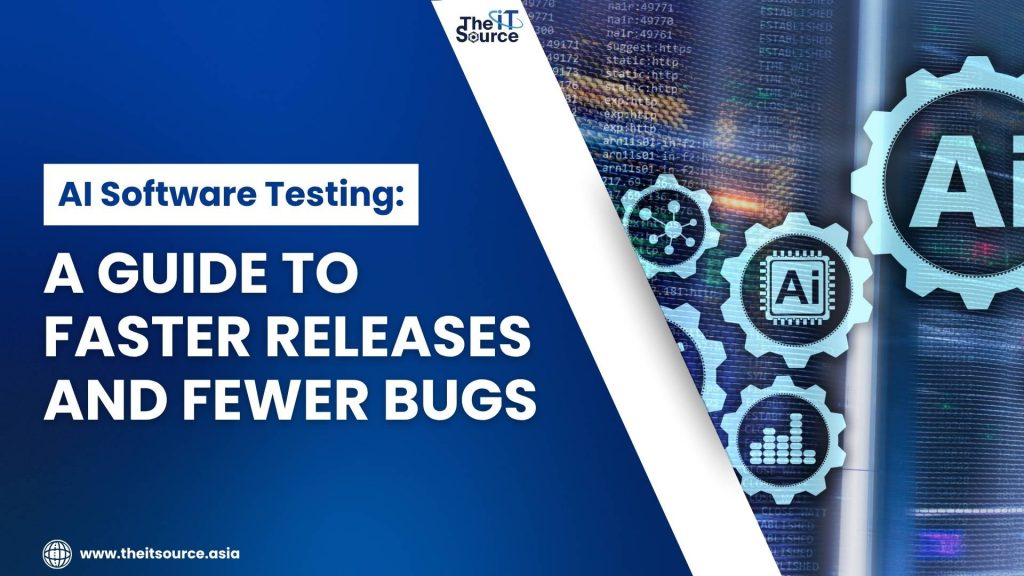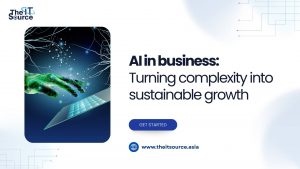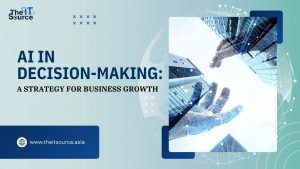AI Software Testing: A Guide to Faster Releases and Fewer Bugs
In the relentless pursuit of innovation, modern software development operates at a breakneck pace. For today’s Quality Assurance (QA) leaders, the pressure is immense. You are caught in a constant balancing act between the demand for speed driven by Agile and CI/CD pipelines, and the non-negotiable mandate for impeccable product quality. Traditional test automation, once the silver bullet for this challenge, is now showing its age. Teams are discovering that the very scripts meant to accelerate their work have become a significant bottleneck, demanding more maintenance than they provide value.
This is precisely where the paradigm of AI software testing transitions from a future-forward concept into an essential, strategic imperative. This evolution is not about replacing the critical thinking of human testers but about augmenting their capabilities with intelligent tools that can test smarter, faster, and more deeply than ever before. This guide from The It Source, is designed for QA leaders and engineers who are ready to move beyond the limitations of conventional methods. We will delve into what AI in testing truly entails, explore how it directly solves the most critical challenges in a modern QA environment, and provide a clear perspective on how you can leverage it to redefine quality engineering within your organization.
The Breaking Point: When Traditional Test Automation Becomes a Bottleneck
Conventional automation is fundamentally based on mimicry. It follows a predefined script without understanding the application’s context, user intent, or visual correctness. While effective for simple, stable workflows, this model breaks down under the complexity and velocity of modern development, leading to several critical failure points.
The Vicious Cycle of Flaky Tests and High Maintenance
The most pervasive issue plaguing QA teams is the brittleness of automated test scripts. Traditional automation relies on static element locators (like IDs or XPaths) to navigate and interact with a User Interface (UI). When a developer refactors code or a front-end framework updates often changing these locators without altering functionality, the test script fails. This ‘flaky test’ creates a false positive, sending engineers on a wild goose chase for a non-existent bug. According to TechTarget’s definition of flaky tests, these failures are one of the biggest pain points in modern QA. The result is a vicious cycle where the QA team spends a disproportionate amount of its time on tedious script maintenance, eroding the very ROI automation was meant to deliver.
The Dangerous Illusion of Coverage
Many teams measure the success of their automation by the number of scripts they have. However, a high script count does not equate to effective risk mitigation. Manually scripting tests to cover every conceivable user journey, device type, screen resolution, and data input is a practical impossibility. This creates a vast and dangerous “coverage gap.” Your test suite might pass with flying colors while critical, untested edge cases or complex user paths contain show-stopping bugs. This forces teams into a difficult position of making calculated risks, hoping that the most damaging defects don’t fall through the cracks. As IEEE Software Engineering insights highlight, coverage gaps remain one of the hardest risks to manage in testing. This gap between perceived and actual quality is a major driver behind the industry’s shift towards more intelligent solutions, a trend noted by many thought leaders in the software engineering space.
The Critical Blind Spot of Visual and UX Bugs
Perhaps the most significant flaw in traditional automation is that it is functionally blind. A script can verify that a button exists in the code and is clickable, but it has no awareness of its visual presentation. It cannot detect if the button is rendered in the wrong color, is visually obscured by another element, or is perfectly aligned on a mobile screen. These visual and UX regressions are often the first thing a user notices. They disrupt the user experience, erode trust, and can directly impact revenue, yet they remain completely invisible to conventional automation frameworks.
What is AI Software Testing? Moving from Mimicry to Intelligence

AI software testing is the strategic application of artificial intelligence and machine learning algorithms to overcome the limitations of traditional QA. It elevates testing from a rigid, script-based activity to a dynamic, adaptive, and intelligent process.
Self-Healing Tests: The End of Constant Maintenance
The answer to brittle scripts is self-healing automation. Instead of relying on a single, fragile locator, an AI-powered engine analyzes dozens of attributes for every UI element. When a developer changes an element’s ID, the AI understands the element is still the same based on its other properties (class, position, text, etc.) and automatically adapts the test on the fly. This machine learning-based approach makes test scripts incredibly resilient, virtually eliminating failures from minor code changes and freeing up engineers to focus on finding real bugs.
AI-Powered Visual Validation: Testing What the User Actually Sees
Visual AI in testing finally gives “eyes” to automation. The process involves using sophisticated computer vision algorithms, much like those used in Google’s advanced image analysis. Gartner’s guide to Visual AI in software testing explains how these tools enable QA teams to detect layout and UX issues at scale, analyzing an application’s UI across devices and environments. The AI takes a baseline snapshot of each screen and, during subsequent test runs, intelligently compares it to the new version. It is trained to identify only the meaningful visual regressions that a human would spot, such as a broken layout, an incorrect icon, or a text overla,p while ignoring dynamic content changes. This allows for comprehensive visual validation across countless pages and devices at a scale impossible for human testers.
Intelligent Test Generation and Optimization
One of the most transformative aspects of AI and testing is the ability to move beyond manually authored scripts. By analyzing application usage patterns from production traffic or by performing an intelligent crawl of the application, AI can automatically discover and generate test cases for the most critical and frequently used user journeys. It can also analyze the existing test suite to identify redundant scripts and prioritize tests based on recent code changes, ensuring that every test run is maximally efficient and focused on the highest-risk areas. The ability for AI to augment and accelerate human developers and testers is a defining trend in the modern software development lifecycle.
The TIS Advantage: Your Partner in AI-Powered Quality Engineering
Successfully adopting AI software testing requires more than a new tool; it demands a strategic partner with a deep, integrated understanding of both quality engineering principles and applied artificial intelligence. At The IT Source, we bridge this gap. Our services are built on the combined strength of our experienced System Testing team and our innovative Gen AI Development experts.
We don’t just offer tools; we deliver comprehensive solutions. Whether you need to augment your current QA team with specialized AI testing skills to tackle visual regressions or build a fully autonomous, self-healing testing framework from the ground up, we provide the expertise and flexible engagement models to ensure your success. We partner with you to design and implement a quality strategy that not only finds more bugs but also acts as a true accelerator for your entire development process.
The era of tolerating flaky tests and accepting QA as a bottleneck is over. AI software testing represents a fundamental shift, offering a strategic solution to the core challenges of delivering high-quality software at high speed. By embracing AI-driven test generation, self-healing scripts, and intelligent visual validation, you can significantly reduce maintenance overhead, expand your test coverage, and empower your talented QA team to focus on what truly matters: ensuring an exceptional and flawless user experience.
Ready to move beyond the limitations of traditional automation and build a smarter, more resilient quality strategy?
Contact the experts at The IT Source today for a complimentary consultation. Let’s explore your unique challenges and design a roadmap to transform your QA process.


 日本語
日本語

